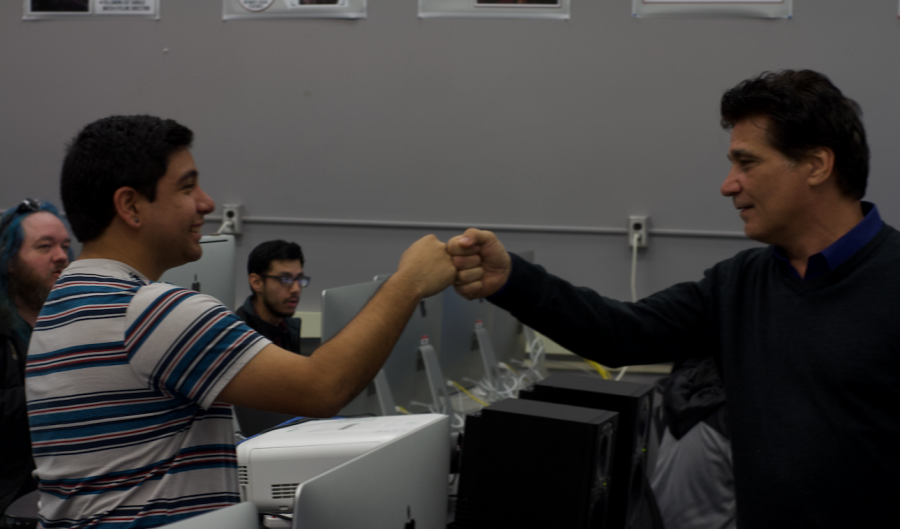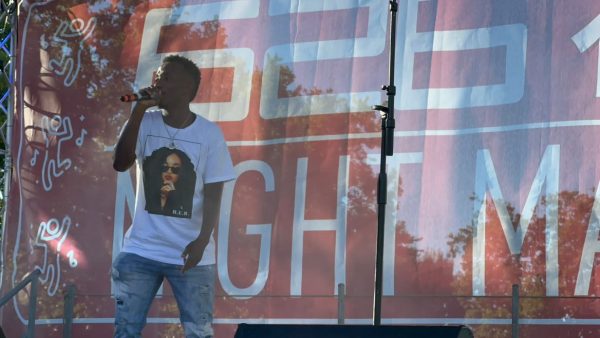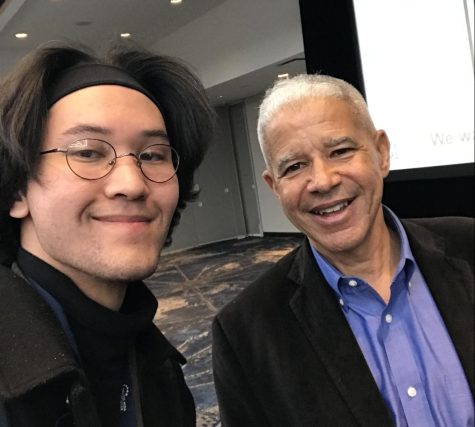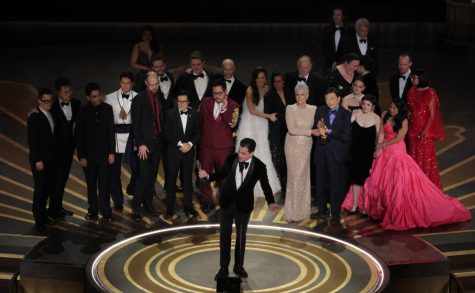Communication students build a new radio station on campus
March 14, 2018
This quarter, California State University, East Bay offered a class in the communication department that had not been offered in twenty years. Comm 3160, “Radio Operation,” has not been offered since CSUEB was known as CSU Hayward.
The class is run by Kevin Pina, communication department lecturer for six years with 20 years experience at KPFA as the current senior producer of a Pacifica radio show called “FlashPoints.” His assignment, as he described it, was to build an internet based radio station, now called East Bay Live.
The students began by researching the technology and terminology required for a radio station as well as streaming platforms. The platform chosen is called Mixlr, which allows students to go live anywhere from their cell phones or laptops.
Mitchell Scorza, one of the East Bay Live radio hosts told The Pioneer that they took a twenty-year-old model that was “dedicated to on-air, FCC licensed radio” and transferred it to fit the “new era of digital radio.” While they are slightly more free to speak about what they want to, they still are “governed by the school and have to adhere to the policies that would reflect well unto the school,” said Scorza.
It was not an easy process building an internet radio station from scratch. The students began by researching the technology. “We researched it together, we looked at different streaming platforms and ultimately decided on this program called Mixlr,” said Pina. The reason they chose Mixlr is because students can go live from their cell phones or laptops from anywhere, according to Pina.
When asked what his biggest challenge was during this process, station manager Christian Martinez told The Pioneer, “They were all pretty big to me. I’ve done small podcasts and stuff like that but to actually get everyone to say we’re going live and producing this.” When it came to taking all their ideas and putting them into motion Martinez said, “I didn’t know how we were going to do that.” Marketing and advertising are also some of Martinez’s concerns: “That was the biggest challenge to me because you can Google how to do everything but you can’t Google how to get people to listen to you.”
During week seven, at the time of writing, there was still much work to do. “We’re still in the middle of this, this is our first broadcast today. We’ve got four more broadcasts before the end of the quarter and the challenges of producing that amount of programming are all going to come out of the woodwork,” said Pina.

















